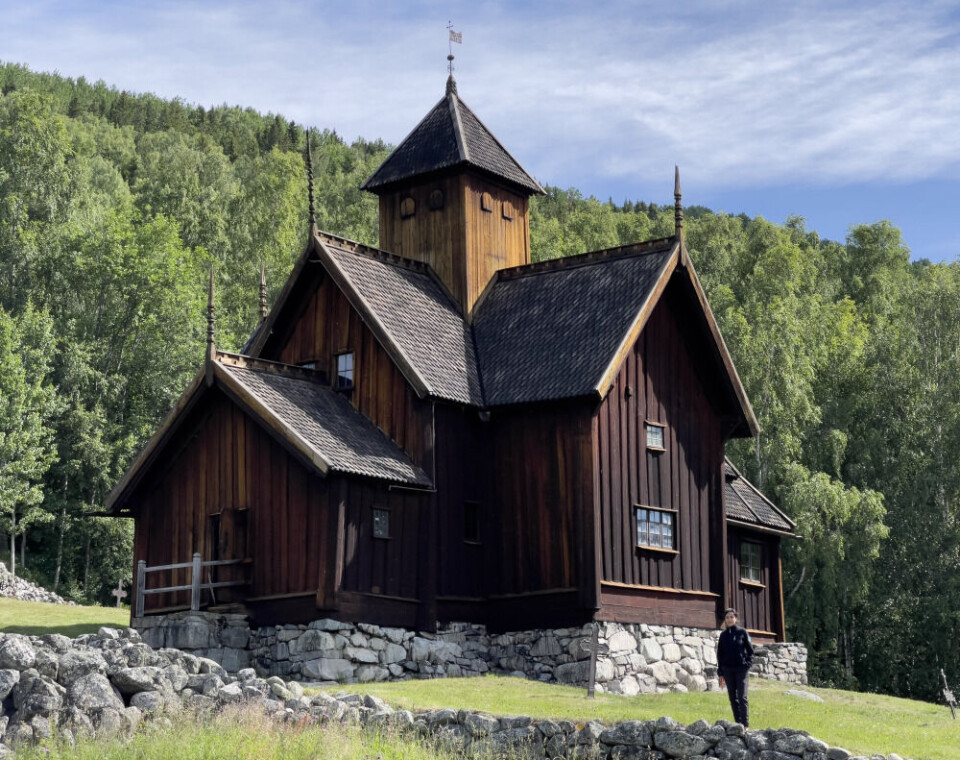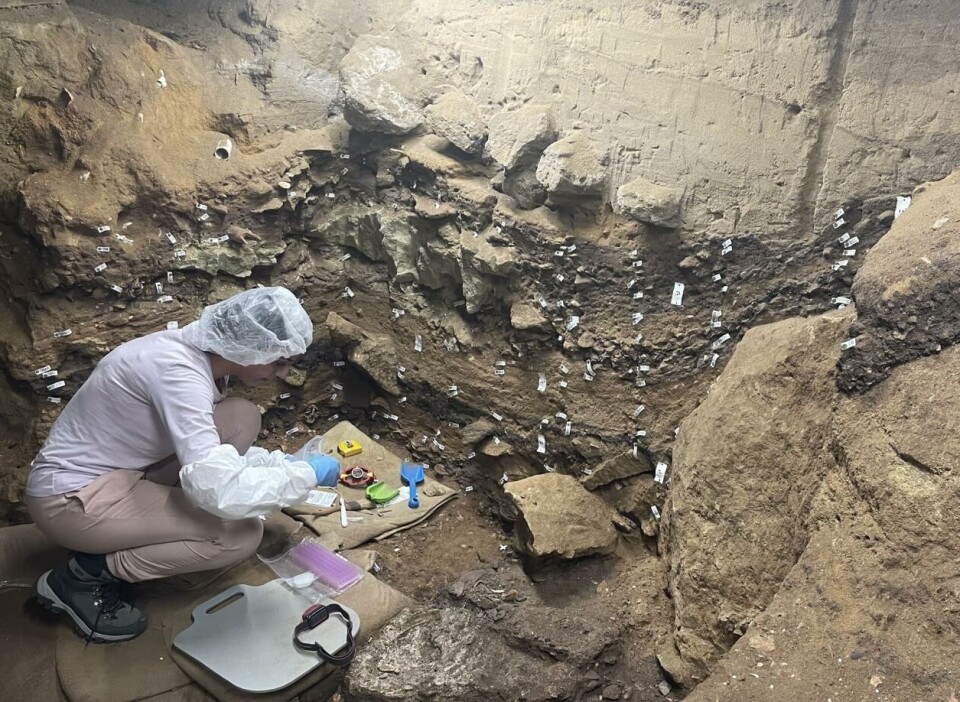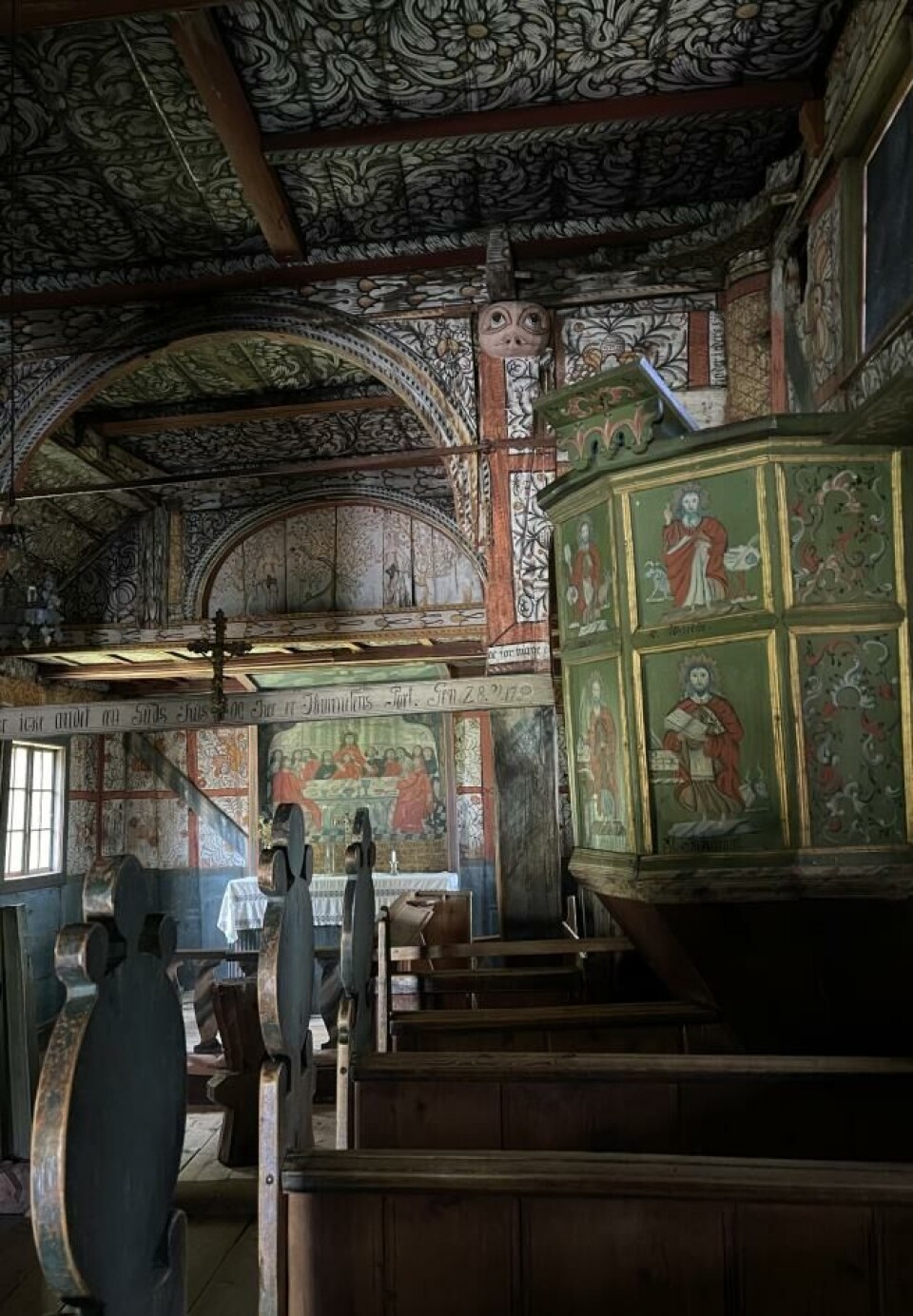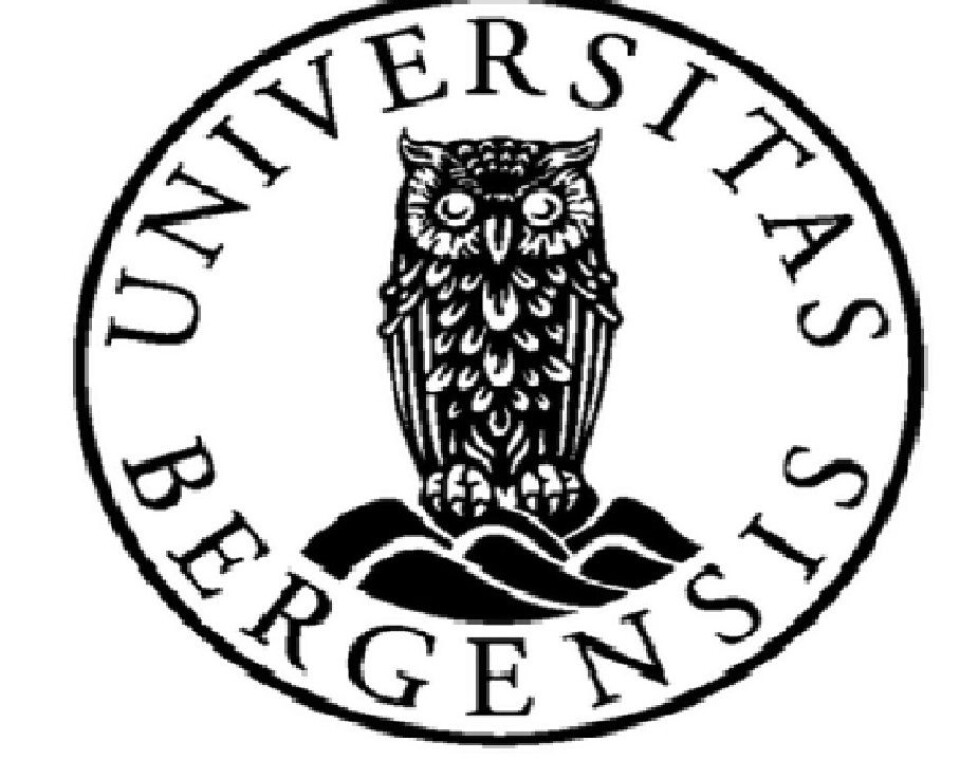THIS CONTENT IS BROUGHT TO YOU BY the University of Bergen - read more

Traces of human saliva have been found in this stave church’s decorative paintwork
Ancient proteins reveal secrets of Uvdal Stave Church.
In a recent study on Uvdal Stave Church in Norway, researchers analysed two distemper paint samples from decorative boards. Using a technique called palaeoproteomics, they aimed to identify the paint's binder – a substance that holds pigment together – and check for any potential contaminants.
The results show that calfskin was used to make hide glue, a common binder in historical paints. This aligns with historical records in Norway, which describe using animal skins to produce binders for paint.
The study sheds light on the materials and methods used in medieval Norwegian craftmanship.
Revealing the past through proteins
“Through studying materials made of proteins, such as bones, and materials containing protein residues, like binders in paintings, palaeoproteomics allows us to solve a number of problems in archaeology and art conservation,” says Zahra Haghighi, a researcher associated with the Centre for Early Sapiens Behaviour (SapienCE) at the University of Bergen.
This scientific method involves extracting ancient proteins from archaeological samples to trace their origins.
Each analysis includes multiple stages, such as sample preparation, data collection, and analysis.

“Proteins provide valuable information about the tissue and species from which they derive. Additionally, proteins can survive for longer and in harsher environments than other materials, like DNA. These qualities make proteins a promising source of archaeological information,” she says.
Human saliva proteins in paint samples
“We examined several hypotheses for the presence of saliva on the painted boards at Uvdal. We believe that the saliva proteins originated from an attempt at the time of discovery to remove dust and dirt,” says Haghighi.
She adds that using one’s own saliva, known as spit or saliva cleaning, was historically one of the most common methods for cleaning a painting's surface in museums.
The study also highlights the risk that modern contaminants, like saliva proteins, could hinder future research, stressing the need for careful handling of historical objects.
Preserving Norway's cultural heritage
According to Haghighi, these results demonstrate the potential of palaeoproteomics to enhance our understanding of the techniques and resources involved in decorating Norway's stave churches.

“This is especially important since only 17 stave churches with distemper paint remain in Norway today," she notes.
Haghighi adds that the limited number of these historical sites makes them invaluable sources of information.
Understanding cultural properties
“Our shared goal is to preserve cultural heritage for future generations. Achieving this involves enhancing our understanding of cultural properties, including their composition and production techniques," she says.
Haghighi notes that their study introduces a tool designed to help achieve these goals. It also highlights how restoration methods and materials can influence future research. Haghighi urges art conservators to make informed decisions when selecting restoration techniques.
Reference:
Haghighi et al. Palaeoproteomic identification of the original binder and modern contaminants in distemper paints from Uvdal stave church, Norway, Scientific Reports, vol. 14, 2024. DOI: 10.1038/s41598-024-63455-4

This content is paid for and presented by the University of Bergen
This content is created by the University of Bergen's communication staff, who use this platform to communicate science and share results from research with the public. The University of Bergen is one of more than 80 owners of ScienceNorway.no. Read more here.
More content from the University of Bergen:
-
Researcher: Politicians fuel conflicts, but fail to quell them
-
The West influenced the Marshall Islands: "They ended up creating more inequality"
-
Banned gases reveal the age of water
-
Researchers discovered extreme hot springs under the Arctic
-
Tiny particles unlock vinegar’s hidden healing potential
-
“Why doesn't it rain more?” asks researcher




































